#Aethiopia
Explore tagged Tumblr posts
Text
Andromeda’s race/ethnicity and why it’s not inaccurate to interpret her as black/African
Now you’ve seen how I draw my babygirl as Afro Palestinian Egyptian so you know where I personally stand on the subject. However, my interpretation isn’t the only one, ancient authors, from mythographers to historians to poets to playwrights, have proposed various different locations for Andromeda’s homeland, often times contradicting each other, what I’m trying to do here is correct some misinformation as well as argue that even if Andromeda isn’t black/ethiopian, she still wouldn’t be considered white or ethnically European.
I would like to reiterate like I did with my Hephaestus/Aphrodite post that I’m not a mythology or history expert, I just read a lot. So do your own research and come up with your own conclusions.
Let’s go.
The etymology of “Aethiopia”
Aethiopia means "of burned face" which yes is pretty racist be modern standards but basically means that its inhabitants are dark skinned, so even if you go by sources that it isn’t in Africa, the inhabitants still wouldn’t be white or Greek.
Location of the Kingdom
You’d hear the statement that the Aethiopia in mythology is not the same as Ethiopia the modern country, which is true. You’d also hear that it’s a completely fictitious location, that’s only partially true, while Aethiopia existed mainly as a mythological location (mentioned as early as the Iliad) that didn’t stop ancient historians, mythographers and poets from placing it in real locations or calling pre-existing nations Aethiopia. It’s hard to pick which one is more “accurate” bc they all contradict each other, not only that, but these writers didn’t actually visit these locations and ancient ppl weren’t as well versed in geography as we are today so they’d be weirdly vague or confusing about these locations, I mean just look at an ancient map and you’d see what I mean.
So personally, I think you can go with any version you personally prefer, the options are quite limitless, she could be from the Arab peninsula, the Levant, North Africa, Persia, hell maybe even India if you are like Ovid.
Andromeda’s genealogy
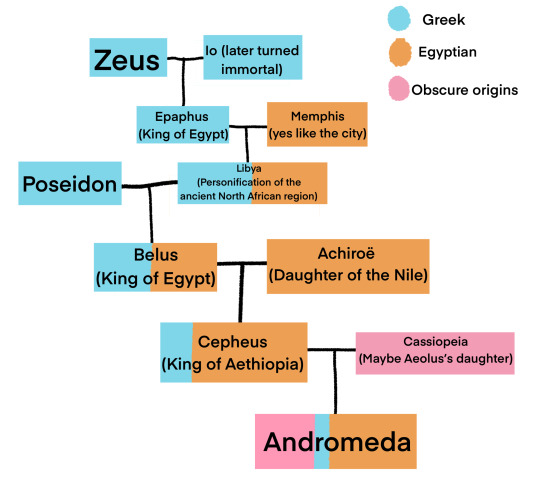
(I just realized that these are the Waterson kids color palette while writing this lmaooooooooo)
Yes Andromeda is descended from Zeus (no family tree can escape that man lol) and she’s also the great granddaughter of Poseidon, which adds a whole new layer to the fact he tried to kill her.
Now for a bit of history: The Trojan war (which didn’t happen irl obviously) was dated as taking place in the 12th or 13th century BCE by some ancient writers, that war happens a few generations after Perseus’s story, which means that Egypt was in the New Kingdom era, also called the Egyptian Empire, when Nubians (who would be considered black by today’s standards) were a very important part of society, even becoming Pharaohs. Ancient Egypt was a lot more diverse than modern ppl give it credit for, there were multiple ethnic groups living there. Not to mention that you can’t get more Egyptian than being descended from the god of the Nile River lol
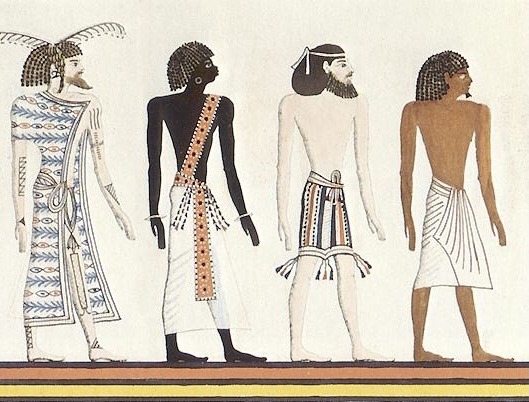
Libya is (obviously) the personification of the region of Libya, not the modern country Libya, but the general area in North Africa west of Egypt. The name Libya comes from the Libu, a berber tribe. So once again, even if Andromeda wasn’t black, even if you interpreted that her kingdom is placed in Asia, she’d still be of African decent.
Cassiopeia is a tricky one, her origins are obscure, she’s called a nymph by Nonnus, while Stephanus of Byzantium (a very late source) states she’s from Ioppa and that the city takes its name from her. However, Ioppa/Jaffa was identified as Andromeda’s home much earlier in Periplus attributed to Scylax, which was composed in the late fourth century bc.
Conclusion
You can make Andromeda black it’s ok. Ancient writers couldn’t agree on her country’s location but we can still speculate. Anyways ummm… I think that’s it? Maybe I’ll add to this if I find or remember more interesting information.
Have a great day.
#greek mythology#ancient greek mythology#greek pantheon#perseus#andromeda#princess andromeda#Persomeda#Ancient Greece#ancient egypt#Zeus#Poseidon#Cepheus#Cassiopeia#io#Belus#Ioppa#Jaffa#Aethiopia#new kingdom#Egyptian empire
85 notes
·
View notes
Text
Achilles vs Memnon (edit this was wrong its just memnon and some dude)

Attributed to Exekias, About 535 BC
Glory to the short king Memnon. Kinda wild that this is the actual finale and greatest champion of Troy and not Hector. And he always gets erased from the modern retellings...
I do like later sources around one bc that really make it explicit that Aethiopia is the same as Aethiopia in the story of Perseus. Only for Ovid to do an Ovid...
#greek mythology#ancient greece#ancient greek mythology#trojan war#memnon#achilles#i dont think ancient greeks (but somehow its more of a roman issue) knew where persia was much less their perceived aehtiopia#aethiopia
31 notes
·
View notes
Photo

Andromeda
Andromeda is a princess in Greek mythology. She is the daughter of Cepheus, the king of Aethiopia (Ethiopia), and his wife, Cassiopeia. The most famous myth associated with Andromeda is the story of her rescue by the Greek hero Perseus, who saved her from being sacrificed to a sea monster. She married Perseus, and they had several children together.
Andromeda is also one of the best-known and recognised star constellations, which also contains the Andromeda Galaxy, the largest galaxy closest to the Milky Way.
Family
Andromeda is the daughter of Cassiopeia and Cepheus, the king of Aethiopia. However, some sources mention that Cepheus was the king of Joppa (in modern-day Israel). After Perseus rescued Andromeda, they got married, and together they had seven sons and two daughters, including Perses (the legendary founder of Persia, from whom all Persian kings are descended), Helios, Alcaios, Mestor, Electryon, Sthenelos, Cynurus, Autochthe, and Gorgophone.
Continue reading...
77 notes
·
View notes
Text
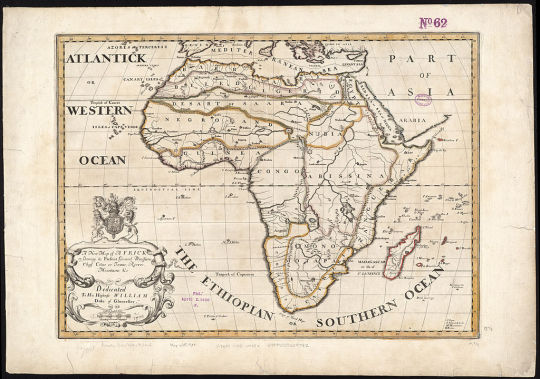
Aethiopian, Æthiopian, Æthiopic or Ethiopian Sea or Ocean (Latin: Æthiopicum Mare or Oceanus Æthiopicus; Arabic: البحر الأثيوبي) was the name given to the southern half of the Atlantic Ocean in classical geographical works. The name appeared in maps from ancient times up to the turn of the 19th century

The originally Greek term Okeanos Aithiopos is an old name for what is now called the South Atlantic Ocean. It is separated from the North Atlantic Ocean by a narrow region between Natal, Brazil and Monrovia, Liberia. The term Ethiopian Ocean appeared until the mid-19th century, for example on the map Accuratissima Totius Africae in Lucem Producta, engraved by Johann Baptist Homann and Frederick de Wit and published by Jacob von Sandrart in Nürnberg in 1702.
The name Aethiopian was related to the fact that, historically, Africa west and south of Egypt was known as Aethiopia. Nowadays the classical use of the term has become obsolete. Also the nation of Ethiopia, then known as Abyssinia, is located nowhere near its namesake body of water but in the opposite eastern end of Africa which is much closer to the Indian Ocean and its subset the Red Sea
#aethiopia#aethiopian#aethiopian ocean#ethiopian ocean#red sea#ethiopia#east africa#egypt#abyssinia#nurnberg#brazil#africa#african#afrakan#africans#kemetic dreams#african culture
10 notes
·
View notes
Text
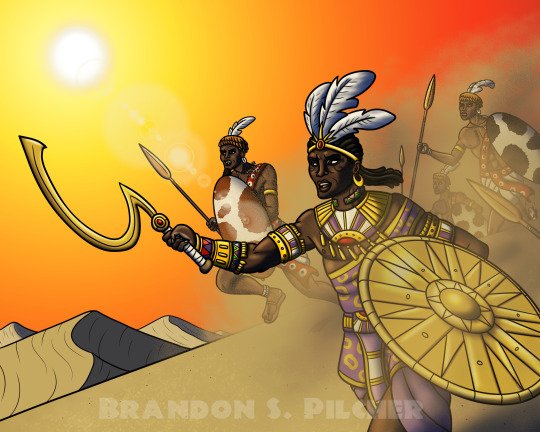
Memnon Leads the Charge
Memnon, warrior king of Aethiopia, leads his army charging into battle on the hot sands of the eastern Sahara Desert!
Although the character of Memnon comes from Homeric poetry, the version of him you see here is based on his portrayal in the Total War game franchise, specifically its entries Troy: A Total War Saga and the “Dynasties” update for Total War: Pharaoh. In the former game, he leads a traveling horde of Aethiopian warriors fighting the Achaeans on behalf of Troy, whereas in the latter he heads the Napata faction. I love playing as him in both games, even if his faction is far from the most powerful in either game.
#total war#total war: pharaoh dynasties#troy: a total war saga#memnon#aethiopia#african#nubian#kushite#ancient kush#sudanese#black man#dark skin#bipoc#fanart#digital art#art
9 notes
·
View notes
Note
I read somewhere that Aethiopia as it's mentioned in the epic cycle doesn't refer to Ethiopia, but Libya. Do you think that is more or less accurate than historical Ethiopia?
Yeah it is a mythical land (which people place in locations similarly to the mythical isle of Ogygia being placed in Malta or Tynisia etc) or the actual land depending on who says the story.
I even read people considering the ends of Persia as the mythical land of Aethiopia to the borders with India unless I am mistaken from some Herodotus mentions; more specifically to his Histories book 2 he mentions how
I believe that where Egypt is now, there was once another such gulf; this extended from the northern sea towards Aethiopia, and the other, the Arabian gulf of which I shall speak, extended from the south towards Syria;
So he places Aethiopia a bith northern than under Egypt as modern Ethiopia is. The explanation to this placement is somewhere between the ends of Persia and the beginning of India. So this placement of Aethiopia is not even associated with Africa at all but rather linked towards the east where we follow the path of the sun (as the solar god/titan Helios and Phaethon linked towards the region flying over there with the chariot (aka east->rising sun).
But then again some people also mention the area of Africa and Libiya but ironically sometimes it was used as a term to characterize the entire African continent by the ancient Greeks or rather the part they knew up to that point (maybe I am wrong about that definitely need to research it more)
I think is hard to pinpoint exactly the location of the mythical Aethiopia is but certainly is a land outside of Greece to the general spectrum of lands that Greeks knew or traveled into and infiltrated them through their beliefs and culture. So in general we are to expect either a completely mythical land or any of the actual lands given to the map like close to India (like Herodotus half-implies) or to the actual land in Africa which gives a wide spectrum one can work with
9 notes
·
View notes
Text
"Listen, I-"
No, because what do you mean the exact same cartoon series that acknowledged Cadmus and Europa to be Phoenicians couldn't make Andromeda dark-skinned?
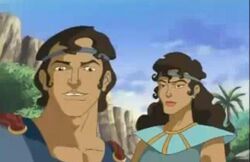
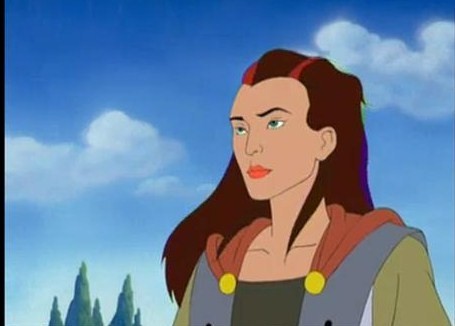
#“Aktchually Aethiopia is not the same as modern Ethiopia.” 🤓👆#She would still be either egyptian phoenician or indian. Next Question!#greek mythology#cadmus#europa#andromeda#ramblings
32 notes
·
View notes
Text
I like to think that Andromeda was Afro Palestinian with Egyptian descent. Sources are all over the place about where “Aethiopia” is but the one real location stated is Jaffa so I’ll stick to that.
#greek mythology#ancient greek mythology#greek pantheon#andromeda#perseus freeing andromeda#princess andromeda#Perseus#perseus and andromeda#aethiopia
39 notes
·
View notes
Text
In character rambling that makes sense to no one to me:
The funniest thing about crafting Mydei and his wife and people take one look at them and are like "Ah, what a fine couple. A fitting spouse for our future king."
Meanwhile others see Jing Yuan and Imani and are like "General.... 😒 how could you. 😒😒 You monster. 😒😒😒"
#does the Luofu love Jing Yuan? yes.#do they shame him for the size difference? ALSO yes!#imani is a jiggly trembling leaf of a woman and regrettably. it DOES turn jy into a monster#which turns into imani being coddled and fussed over and jy being so pouty about it#where's HIS sympathy!!!#meanwhile mydeimos and his wife: flourishing. unbothered. moisturized.#tae talks#her name isn't 'the wife' I'm just undecided on the name#bc it's no Grecian... dunno whther to go for ancient Semitic or African in accordance to ancient Aethiopia.... decisions
0 notes
Photo
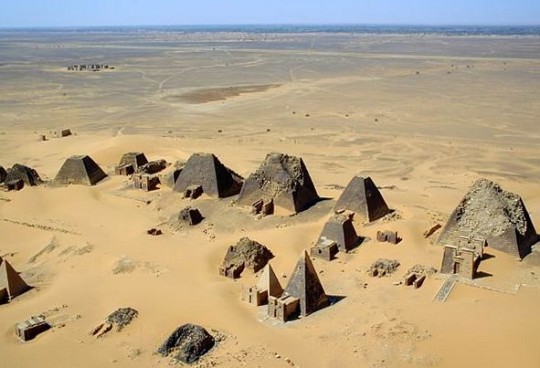
Meroë
Meroe was a wealthy metropolis of the ancient kingdom of Kush in what is today the Republic of Sudan. It was the later capital of the Kingdom of Kush (c. 1069 BCE to c. 350 CE) after the earlier capital of Napata was sacked c. 590 BCE. Prior to that date, Meroe had been an important administrative centre.
The city was located at the crossroads of major trade routes and flourished from c. 750 BCE to 350 CE. Meroe is listed by UNESCO as a World Heritage Site. As no one yet has been able to decipher the Meroitic script, very little can be said for certain on how Meroe grew to become the wondrous city written about by Herodotus circa 430 BCE, but it is known that the city was so famous for its wealth in ancient times that Cambyses II of the Persian Achaemenid Empire mounted an expedition to capture it. The expedition faltered long before reaching the city owing to the difficult and inhospitable terrain of the desert (and, according to some claims, may never have been mounted at all). Still, the persistence of the story of Cambyses' expedition suggests the great fame of Meroe as a wealthy metropolis.
The city was also known as the Island of Meroe as the waters flowing around it made it appear so. It is referenced in the biblical Book of Genesis (10:6) as Aethiopia, a name applied to the region south of Egypt in antiquity meaning "place of the burnt-faces". Although there is evidence of overgrazing and overuse of the land, which caused considerable problems, Meroe thrived until it was sacked by an Aksumite king c. 330 CE and declined steadily afterwards.
Egyptian Influence & King Ergamenes
While there was a settlement at Meroe as early as 890 BCE (the oldest tomb discovered there, that of 'Lord A', dates from that year), the city flourished at its height between c. 750 BCE and 350 CE. The Kingdom of Kush, founded with its capital at Napata, was ruled by Kushites (called "Nubians" by the Egyptians) who, early on, continued Egyptian practices and customs and, though they were depicted in art as distinctly Kushite, called themselves by Egyptian titles. The historian Marc Van De Mieroop writes:
Meroitic culture shows much Egyptian influence, always mixed with local ideas. Many temples housed cults to Egyptian gods like Amun (called Amani) and Isis, but indigenous deities received royal patronage as well. A very prominent Nubian god was the lion-deity Apedemak, a god of war whose popularity increased substantially in this period. Local gods were often associated with Egyptian ones: in Lower Nubia, Mandulis, for example, was considered to be Horus's son. Hybridity is also visible in the arts and in royal ideology. For example, kings of Meroe were represented in monumental images on temples in Egyptian fashion but with local elements, such as garments, crowns, and weapons. (338).
In time, however, these practices gave way to indigenous customs and the Egyptian hieroglyphs were replaced by a new system of writing known as Meroitic. The break from Egyptian culture is explained by the ancient historian Diodorus Siculus who writes that in the time before the reign of King Ergamenes (295-275 BCE), it had been the custom for the high priests of the Egyptian god Amun at Napata to decide who became king and to set the duration of the king's reign.
As the health of the king was tied to the fertility of the land, the priests had the power to determine if the sitting king was no longer fit to rule. If they deemed him unfit, they would send a message to the king, understood to be from the god Amun himself, advising him that the time of his rule on earth was completed and that he must die. The kings had always obeyed the divine orders and had taken their own lives for the supposed good of the people. However, Diodorus continues:
who had received instruction in Greek philosophy, was the first to disdain this command. With the determination worthy of a king he came with an armed force to the forbidden place where the golden temple of the Aithiopians was situated and slaughtered all the priests, abolished this tradition, and instituted practices at his own discretion.
The archaeologist George A. Reisner, who excavated the cities of Meroe and Napata, has famously questioned Diodorus' account calling it "very dubious" and claiming that the Ergamenes story was a national myth which Diodorus accepted as historical truth. Since there is no ancient evidence contradicting Diodorus, however, and since there was clearly a significant cultural break between Meroe and Egypt with Ergamenes' reign, most scholars today accept the account of Diodorus as either certain or something close to actual events.
Continue reading...
174 notes
·
View notes
Photo

2025 March 18
LDN 1235: The Shark Nebula Image Credit & Copyright: Timothy Martin
Explanation: There is no sea on Earth large enough to contain the Shark nebula. This predator apparition poses us no danger as it is composed only of interstellar gas and dust. Dark dust like that featured here is somewhat like cigarette smoke and created in the cool atmospheres of giant stars. After expelling gas and gravitationally recondensing, massive stars may carve intricate structures into their birth cloud using their high energy light and fast stellar winds as sculpting tools. The heat they generate evaporates the murky molecular cloud as well as causing ambient hydrogen gas to disperse and glow red. During disintegration, we humans can enjoy imagining these great clouds as common icons, like we do for water clouds on Earth. Including smaller dust nebulae such as Van den Bergh 149 & 150, the Shark nebula, sometimes cataloged as LDN 1235, spans about 15 light years and lies about 650 light years away toward the constellation of the King of Aethiopia (Cepheus).
∞ Source: apod.nasa.gov/apod/ap250318.html
86 notes
·
View notes
Note
What species of dragons are found in Africa? What clades do they belong to?
ooo so I was wanting to do a Smaugust Post about this but I was unsure how, so I'll just reply to this question with 12 very rushed dragon doodles...
(edit; to be clear this is in my creative project Dracones Mundi, not 'real dragons' or a comprehensive list of mythology. Dragon designs inspired by mythology)
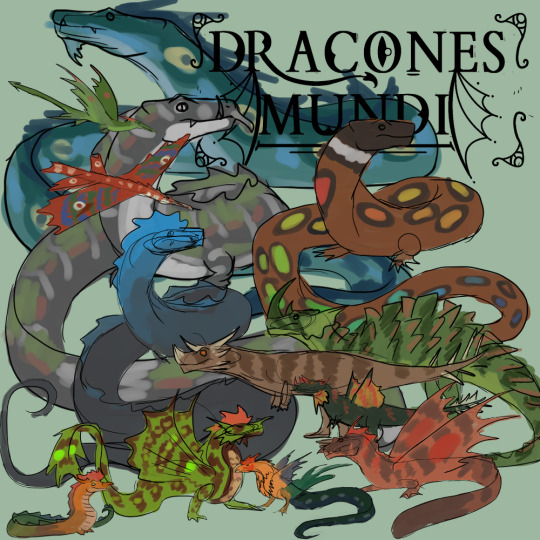
Click the 'keep reading' to learn more!
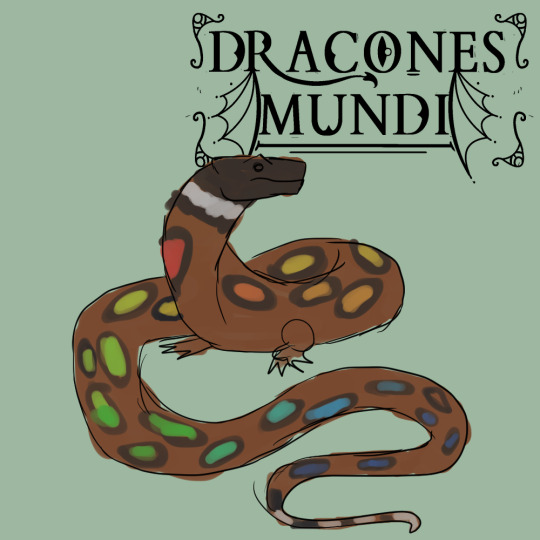
West African Rainbow Serpent (Dracovermidae: Afroserpens iris)
This dragon is specifically a 'west African rainbow serpent' to differentiate been this and the Australian rainbow serpent. The West African Rainbow Serpent is based on West African folklore (Vodun tradition among other things, deities such as Ayedo Wedo etc.) and the physical design is based on an art sculpture of Ayedo Wedo a friend sent me a picture of (black head, white neck collar) + some snakes I like (spots with dark rims) + rainbow gradient.

Grootslang (Dracovermidae: Afroserpens magnus)
A gigantic dragon with diamond eyes said to live in caves under South Africa - looking into South African caves to discover there are vast bodies of water in huge caves was an experience - the above design is a loose idea, the final Grootslang for the Dracones Mundi project may look different...
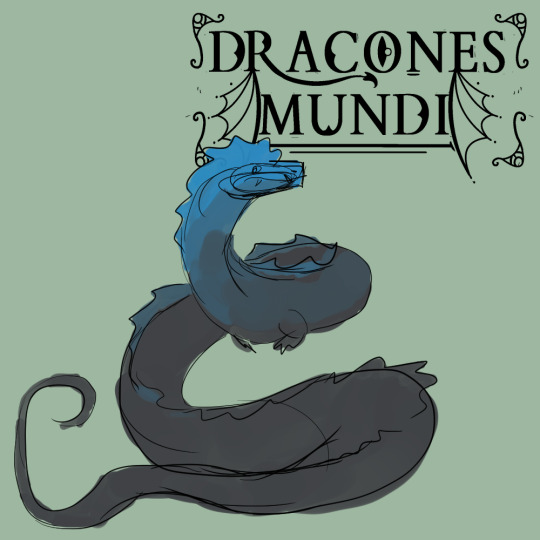
Elephant Eating Serpent (Dracovermidae: Afroserpens aethiopicus)
Based on bestiaries saying 'big serpents in Africa wrap elephants in their coils'.
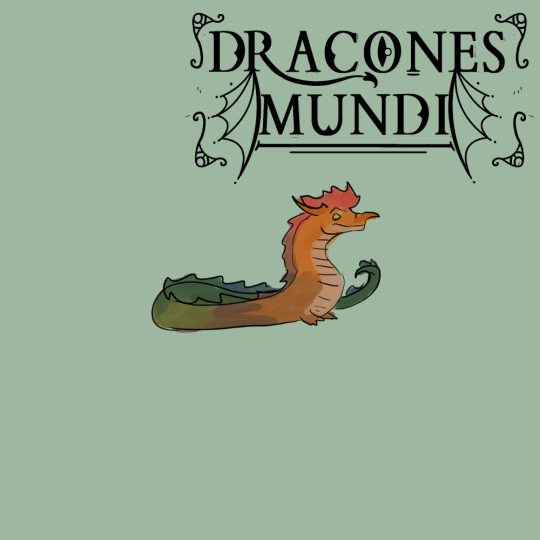
Chicken Headed Serpent (Afroserpens gallocephallus)
I might merge this design with the existing cockatrice design (see further below), only time will tell...
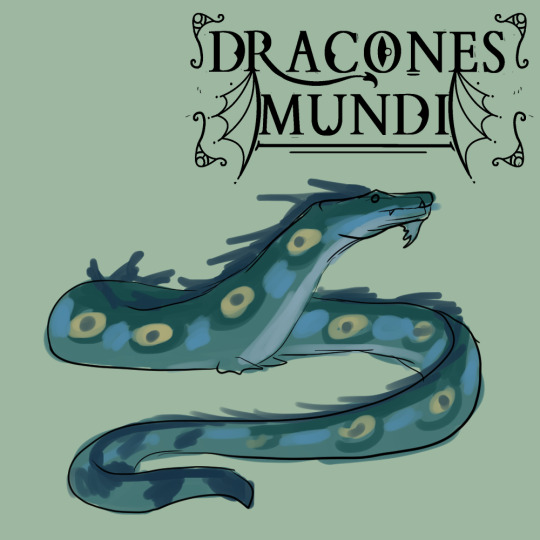
Nile Serpent? (Dracovermidae: Dracovermis hydra)
Huge serpent found in the Nile, and in the Mediterranean. Inspiration for Apep/Apophis in Egypt, but also for the Hydra in Greece.
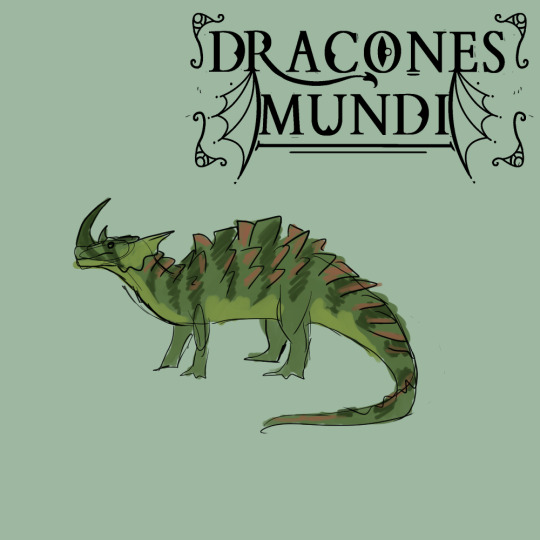
Congan Plated Dragon (Testudracidae: Stegosuchus monstrum)
Large dragon that lives in the Congo Basin - inspired by Mokele Mbembe, Emele Ntouka and Mblieu Mblieu Mblieu
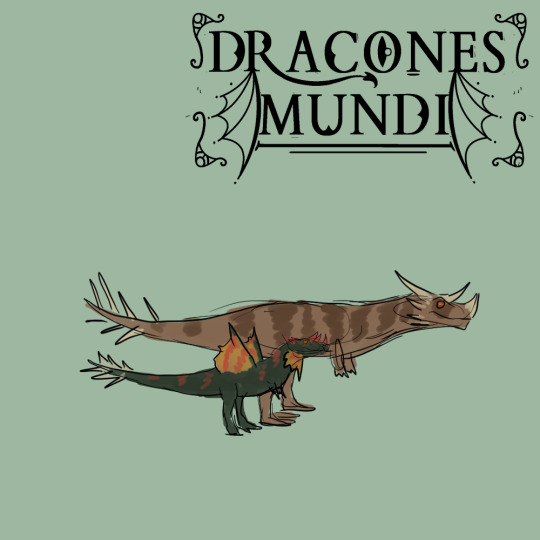
Dinodrakes (Drakonidae: Dinodrako...? )
Silly dragon I put on Madagascar - not inspired by folklore, these are just funny dinosaur inspired dragons. Mr Razzledazzle and his beautiful big wife.
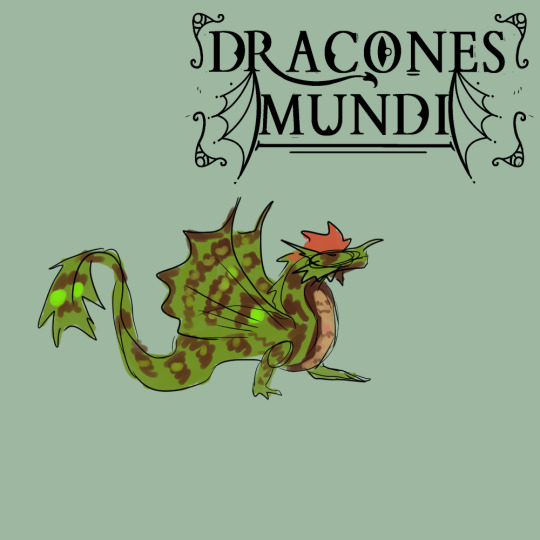
Green Wyvern (Megaviperidae: Megavipera virida)
Based on Europeans slapping a little green dragon on maps of Africa for 'Aethiopia', 'here be dragons'. Also this is Saint George's dragon, so in versions of the legend where the saint fights the dragon in Libya I decided to put the green wyvern in Libya. Green wyverns therefore have a wide distribution in Dracones Mundi as Saint George has fought the dragon throughout North Africa, the Middle East and Europe.
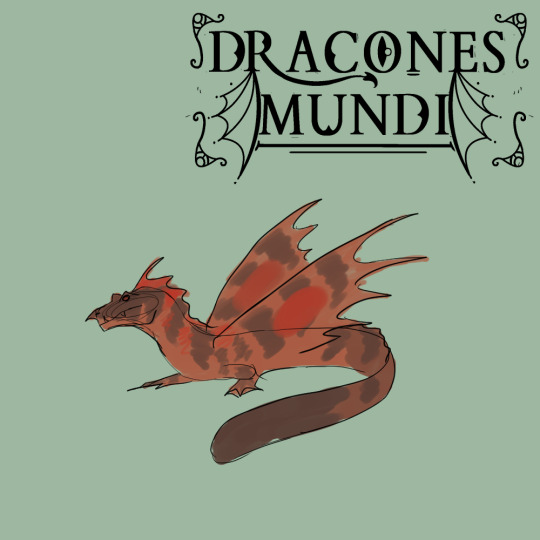
Kongomato (Megaviperidae: ?)
A swimming dragon that lives in Zambia - it can grab boats with it's powerful jaws, swim with it's powerful tail and has huge wings. I am not certain on this final design, working on it...
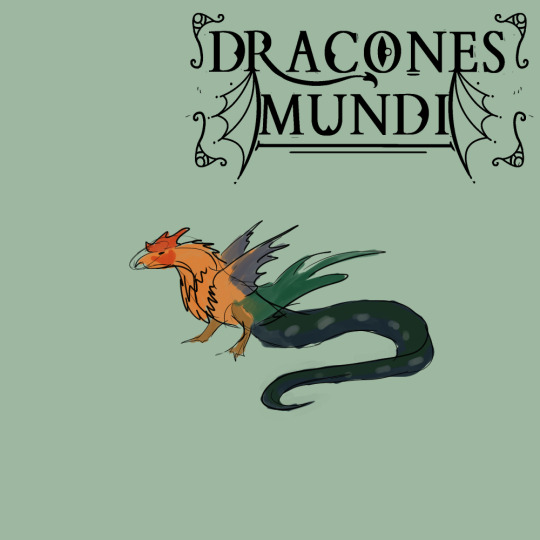
Cockatrice (Medaviperidae: Basilliskos gallimimus)
CHICKEN DRAGON. Very deadly. Found throughout the world, including Africa.
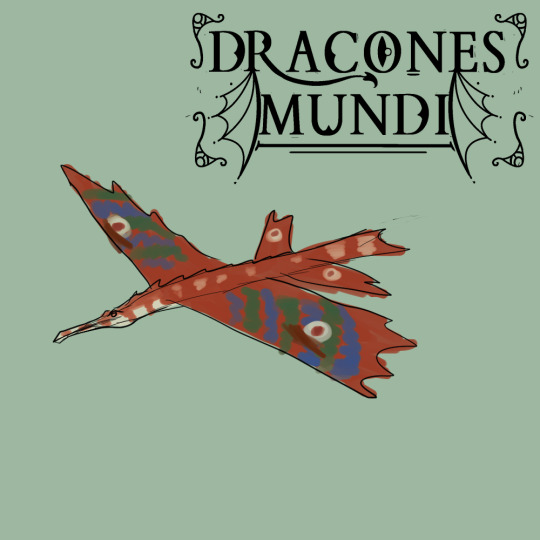
Jaculus (Megaviperidae: Pteraserpens jaculus)
Jaculus, the javeline serpent, can fly at intense speeds, stabbing prey with it's sharp face.
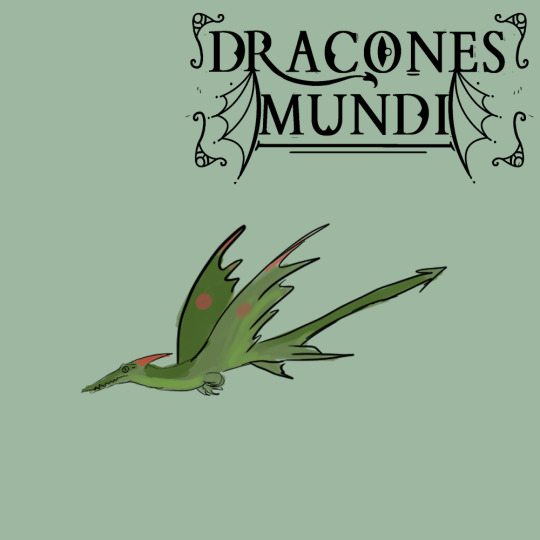
Terrorsaur (Megaviperidae: Pteroserpens...?)
Silly dragon based on "what if janky cartoony green pterodactyls are dragons?" and then I found a lot of cryptozoology places 'pterosaurs' in central Africa. Playing with this concept, nothing solid yet.
...
There are some other African dragons that I'm not sure about including - Ninki Nanka is something I have had on my radar for a while but I could not find enough info on it to write or draw something (recently looked it up again and there is more info wow... Okay next draft will include Ninki Nanka!!!!)
and Akhekhu which I had in a previous draft then abandonned. Might put him back in. Not sure if he's dragony enough?
So in this current roster of African dragons we have 6 inspired by African folklore and mythology (Grootslang, Rainbow Serpent, Nile Serpent, Congan Plated Dragon, Kongomato, Chicken Headed Serpent) 4 inspired by European mythology saying 'this lives in Africa' (Cockatrice, Green wyvern, Jaculus, Elephant Eating Serpent) and 2 I made up just for fun (Dinodrakes and Terrorsaurs)
136 notes
·
View notes
Note
Hello, I have a question about about Memnon. Given his lineage, his parents, his parents' parents etc, how was he depicted as a dark-skinned?
Hehehe I kinda saw this one coming as a question but at the same time it is a very fair and very good question. Sorry if it gets long!
Short answer is...he is not always depicted as dark-skinned at all.
In fact here are some depictions of Memnon in Greek pottery in which Memnon is depicted as any other Greek figure:





Memnon is not necessarily depicted as some dark or other figure but rather as any other typical figure for Greek art. There isn't even a differentiation in his armor or style. So in these paintings the only way for us to tell that it is Memnon is the fact that we have his name inscribed over his body or the fact that he is carried away by winged goddess Eos (his mother). Even in scenes that depict him battling Achilles we cannot fully see what characters we talk about unless we have the two goddesses from each side (who are by n large interpreted as their divine mothers; Thetis and Eos respectably)
There are however depictions out there like this famous and detailed depiction of the African archer surrounded by Amazons:

This depiction is without inscriptions (unlike the other examples in which Memnon is mentioned with an inscription of his name) so this depiction is oftentimes called "Memnon departing for Troy" because of the context. Ironically researchers like Beazley do not name him as Memnon but as one of Memnon's followers/attendants (possibly influenced as well from other pieces of pottery gathered). Both hypothesis for this beautiful and unique piece of art are possible. Either it is Memnon so we have a rather rare depiction of his as an African archer (especially since in art we do see Memnon hold close ranged weapons like spear and shield over bows and arrows which would make this depiction even more interesting to consider) or it is a masterfully created depictions of the general allies of Troy given the Amazons also being there.
And that is of course if we also make the hypothesis that Aethiopia of Greek myth and legends is actually an area in Africa or even the actial Ethiopia itself because there are also writers that place Aethiopia of Greek mythology in Asia and to the region between Persia and India to name a few (you can see my other reply where I also mention the writings of Herodotus as a sample)
Although I see no reason why not have into account both especially since Aethiopia was a name of various mythical locations so we could have the same name in many at the same time depending on the myth, of course Africa included. And we do have figures that are clearly depicted as African in Greek pottery such as the one above or these two (one depicting Menelaus about to spear Amasos who not only shows characteristics of African descent but we also see a name that is not Greek either such as Amasos or Amssis while the other portrays an African man on a lekythos


So we can definitely assume that at least some artists wanted to depict the mythical Aethiopians as connected to the actual African continent. In fact judging from the other figures depicted and mentioned I am convinced that in this case of the Epic Cycle Aethiopia is an African country (even potentially the actual Ethiopia too) It is just that Memnon himself more often whatnot is not depicted as such with some exceptions like the artwork I show upwards that occasionally get interpreted as Memnon but unfortunately not named with inscription while when he is mentioned in description he is oftentimes depicted not just the same way as other Greek figures but also even having similar armor.
The depictions that truly and clearly state who Memnon is, oftentimes do not differentiate him at all than the rest of the Greeks or Trojans in vases.
*
However let us hypothesize that indeed these depictions are Memnon and we talk about a man that clearly doesn't come from an African family tree classically and yet could be depicted as such.
One should take into consideration that the ancient Greek art has its own purpose as part of the propaganda they want to produce at that time. Memnon is the king of Aethiopians (in the way his inheritance is shown is not showing that he is ethnically related to the area with Eos being his mother and Tithonus, a Trojan, his father as you brilliantly said) why would he be depicted as such in art? Well that is because Greeks by n large depict differently the people they had as enemies or opponents. For example the Amazons are oftentimes depicted as Skythians or as Persians depending on the political wave in ancient times. My guess would be that when Memnon is to be depicted as non-Greek would be to tone up even more how he is linked to opponents of Greek nation, similarly to how the Amazons are depicted as Thracians regardless of whether one of them is linked to Heracles or Ares or someone else because they are depicted as opposing force.
Greeks were not always...political correct when it came to their depiction narrative with the non-Greeks or the allies to the non-Greeks for that matter especially to sensitive times of war and conflict for example like Peloponnesian War. I would expect that would be the reason in this case. And they were not always consistent with the images of their opponents because the mythical opponents in Greek art served as propaganda for Greeks to gain courage from mythical stories or fight harder.
But as I said ironically we do see Memnon more often whatnot be depicted the same as the Greek opponents he faces and he is depicted with inscriptions too, which would oftentimes be the only way we have to identify him.
One of my favorite depictions of Memnon in pottery is this black figure amphora that was attributed to the great master Exekias:

For starters we see the two attendants of Memnon being African and have very beautiful and intricate clothing that have even extra details in color red. One of them is even identified as Amasis. Memnon himself seems slightly differentiated than his attendants (possibly the painter wishes to point out the identity of his parents which is perhaps why he is also identified with Memnon apart from his two attendants/warriors or simply to point out he is the central figure of this scene) The reason I love this so much is because his clothing is reflecting the one of his attendants so it shows his raising in Aethiopia while his shield does resemble a bit more Greek style potentially to point to the direction of his mother. I really love this mixture of culture to his clothing which I do not see often. The details to his head are also amazing:

I love it how his hair curls in spirals in the end and the details of his beard as well as the amazing detail of the dog on his helmet. It seems to be combining all the elements of the previous mentions, the african characteristics to his wardrobe and his mixed roots as a son of a goddess and a Trojan. It is something that looks very promising as art and black figure technique is hard to depict with such details in engraving which is why I love it so much. He is not depicted as one-sided and actually we see this interesting transaction in his clothing as well as the beauty of the combination of colors added plus the engraving technique that black figure pottery is so famous for.
Depictions of Memnon namesake depicting him with more ethnically African characteristics such as the bust from 2nd century AD belonging to the general wave of roman realism that seems to be also leaning to the interpretation of mythical Memnon of Epic Cycle as well.

In this case we do tend to see other depictions of Memnon differently sometimes. Of course antiquity has also its waves in art just like modern day does so figures who were linked to certain locations such as king Memnon do receive more the characteristics of the locations they ruled or are linked with. Which makes sense.
So to sum it up, ironically the Greeks do not always depict Memnon as African or other. In fact more often whatnot his depiction is not massively different than the rest of the Greeks or Trojans There are some examples of African warriors depicted upon pieces of pottery that have amazing potential even if they do not always identify the hero with an inscription but that gives a different perspective and points towards either the land the character rules or the aspect of the character as an opponent of the Greeks and ally to Trojans, realism or genetics not always in mind in that case. In even rarer occasions for example like this last depiction we seem to see almost a mixture of elements to the design of a warrior that could be Memnon.
PS: One should not of course confuse the Epic Cycle Memnon with namesakes of his for example a figure named "Memnon of Rhodes" who is mentioned in Aristotle's Economics
Hope this helps! ^_^ Memnon is definitely a really fascinating figure in the epic cycle and we need to have more discussion about him.
32 notes
·
View notes
Note
(Hi, sorry if you recieved the same ask twice)
Was the 'Aethiopia' mentioned by Homer, the Greeks in the Classic period, and by the Romans the same one? Or did each refer to a different place geographically?
I have no idea.
If anyone else knows feel free to chime in 🫡
30 notes
·
View notes
Text

Perseus and Andromeda In a lot of classical artwork, I always see Andromeda depicted as white/greek, and since she's the Princess of Aethiopia, I wanted to try and make a more authentic, historically accurate depiction. I hope you enjoy! In other words: She's everything, he's just Perseus. (Nah jk, Perseus is a really solid dude overall, I just had to make the reference)
#perseus#andromeda#greek mythology#mythology#illustration#art#classical mythology#classical literature#greek myth art#medusa#ancient greece#ancient africa#pagan#paganism#classics#perseus and andromeda#tagamemnon
178 notes
·
View notes
Text
Zeus Aethiops
For the people that come to my blog for the information, the actual post is in non-italics below (pls scroll down quick otherwise I'll look like a dork haha) For the people who have been following my blog for a longer period of time (and those fond of the dramatic) I set this scene:
You open your eyes to a sturdy oak table in the midst of a dimly room that smells of moisture, frankincense, and oakmoss. A deep blue satin cloth, about three feet long, lies upon the table, held down on either side by lit candelabras. The surface is bare otherwise. Pulled out a few feet behind the table is matching sturdy oak armchair with eagle head detailing on each of the armrests, and a royal purple satin cushion. Star-of-Zeus enters, wearing square glasses and holding a old and dusty-looking leather-bound tome that's thicker than their hands can hold stretched to their max, so Star chooses to hold it to their chest wrapped in their arms. Walking to the table, you watch them lean forward to set the heavy tome on the table with a solid, resounding thump before wiping the dust off their shirt and blowing the rest of the dust off of the tome before opening it up. [You, standing on the other side of the table, are subsequently covered in this dust and have to stand there looking like a bizarre snowman while listening] Finally, Star looks up through their glasses after settling in their chair and grins.
"My, my. It seems that it's been three years and two months since my last Zeus Epithets post. Finally ready for the next one?"
Zeus Aethiops is one of my absolute favorite epithets that I commonly venerate, and though this epithet comes rooted in a notion of race that looks nothing like our modern concept, I will take a stand (likely in another post so I can make a full breakdown/rant) against other opinions that I've seen that advise against blending the two (ancient and modern) notions of race when venerating such an epithet, but it will be written entirely from my perspective and experience, so be aware. But I digress - let's get back to learning about this epithet. Some translations I've seen include "of the Burnt Face" or "Ethiopian". Our beloved resource, theoi.com, defines this epithet of Zeus as:
AE′THIOPS (Aithiops), the Glowing or the Black. A surname of Zeus, under which he was worshipped in the island of Chios. (Lycophron, Cass. 537, with the note of Tzetzes.)
If we go to the theoi.com translation of Lycophron's Alexandra, 537, we find the line:
But we have one, yea one beyond our hope, for gracious champion, even the god Drymnius Promatheus Aethiops Gyrapsius, who, when they who are destined to suffer things dread and undesirable shall receive in their halls their fatal guest, the swooping robber, the wandering Orthanes...
The god referred to only by epithets in this line "Drymnius Promatheus Aethiops Gyrapsius" is indeed Zeus - the epithets Aethiops + Gyrapsius are cult-names from Chios, while Drymnius is from Pamphylia and Gyrapsius from Thurii.
So, now that we've established this epithet is from Chios, and attributed to Zeus, let's take a closer look at what the term Aethiops might signify. Merriam-Webster defines Aethiops as an alternate spelling of Ethiops, and defines Ethiops and simply meaning "Ethiopian" but the old Greek etymology of the word is a compound, according to Wikitionary --
From Proto-Hellenic*aitʰiyokʷs, explained since antiquity as αἴθω (aíthō, “I burn”) + ὤψ (ṓps, “face”), though this is likely a folk etymology.
Thus, it wouldn't be outrageous at all to assume that this was a word used to refer to peoples with higher amounts of melanin, or generally those from the ancient region of Aethiopia, which was a geological term used to designate the "upper nile region of Sudan, south of the Sahara, and certain areas of Asia."
But yes, overall the opinion of scholars and historians is that the term 'Aethiops' could reasonably be associated with features that are associated with the Black or African people of today. As an American, I could go on long-winded talks about my experience worshipping a Justice god that is depicted as what I see as Black (not even to mind that I started following this path in 2020, during another round of BLM protests) but that's a topic for a more personal post instead of a research-based one. In the meantime, please look at one of my favorite pictures of Zeus from a Laconian cup, and if you look at me in my beautiful hazel eyes and tell me those aren't locs coming from Zeus's head I'm having Sisyphus crush you under his boulder.
Was Homer's Zeus Black?
Chios is a Greek island off the Western coast of Turkey, and I watched one video that also talks about Zeus Aethiops but makes the claim that Homer is from the island of Chios (which the author provides evidence for from the Homeric hymn to Apollo) and therefore the Zeus that Homer writes about in the Iliad and the Odyssey could be Black. In my personal opinion, they're playing very fast and loose with the Homeric Question, something scholars have been arguing over for centuries, but at the same time I very firmly believe in the mystery of history and the fact that it is incredibly important for people to see themselves in the deities or things they venerate, and at the very least it's great food for thought. The Homeric Question is outside the scope of this post, but I just wanted to share some other resources in case someone wants a longer more video-essay style post about Zeus Aethiops and that perspective on Homer.
But yes. That's all I have to say on Zeus Aethiops for now, but rest assured I will be shouting from the rooftops about him again soon. I'm so happy I finally did a post on one of my (probably top 5?) Zeus epithets, even though there isn't a lot to be found about this surname of his since I suppose it could have been considered minor in the ancient world.
As always, feel free to send in requests for other epithets!
#zeus worship#hellenic polytheism#hellenic paganism#hellenic pagan#hellenic polytheist#zeus#hellenism#pagan#theoi#zeus deity#zeus epithet
62 notes
·
View notes